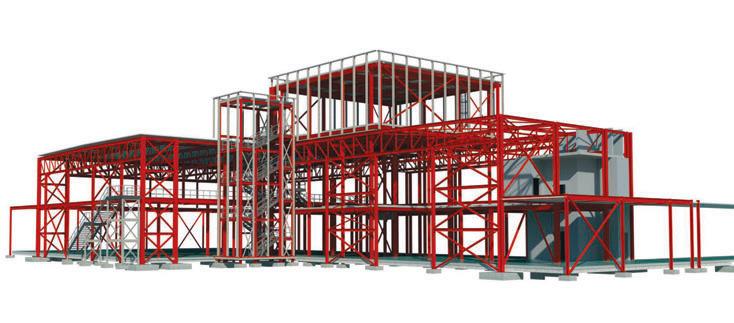Comment
A BIM industry temperature check Excitech consultant Rob Clark was part of a committee that recently ran a workshop called BIM4Real to share and solve some of the problems real Building Information Modelling projects encounter. In this article he shares the findings and some personal thoughts.
B
IM4Real eschewed the tried and tested conference format by focussing on a fictional building project: the construction of a large shop in the English and Welsh border town of Shrewsbury. The completely fictional client had produced an Employer’s Information Requirements document in line with BSi PAS1192:2. Attendees were split into five groups and included people from different disciplines. Their task was to discuss how they would deliver this project as a team. There were three focused sessions: project set up; design delivery; and using the data produced to aid the construction and subsequent operation of the building. Five chair-people summarised at the end of each session what had been discussed. Each table was laden with documentation including industry protocol
documents and templates for execution plans as well as the Employer’s Information Requirements document. In each session, the chair-people were asked to get answers to very specific issues that face our industry in the delivery of projects using co-ordinated Building Information Models (BIMs). What came out proved very interesting. There was plenty of consensus, a lot of confusion and quite a few challenges.
Project kick off Despite years of under-utilisation the BS1192:2007 Code of Practice workflows were being adopted by more than half of the room. This is likely to be due to the natural standardisation of information that comes from adopting a Building Information Modelling process.
BIM4Real the event
BIM4Real was a collaboration between Ramboll’s Graham Stewart, Ray Purvis of Atkins and Excitech’s Rob Clark.
18
May / June 2014
p18_19_21_AEC_MAYJUNE14_Excitech.indd 18
The three industry experts were sitting in the keynote presentation at Autodesk University, when they realised that what they wanted from a Building Information Modelling (BIM) event was no longer what BIM was. They wanted evidence of what the industry is doing, what it cannot do, where the real challenges are and what is real best practice.
They thought the best way to achieve this was to get a lot of clever people talking to one another; to bridge the gap between strategy and delivery. So, BIM4Real was born: a workshop event without any formal presentations. Attendees included architects, engineers and construction managers, as well as clients and consultants.
Prior to the meeting I had expected a lot of conversation on liability, but interestingly there was a good amount of consensus that project indemnity covers these requirements. Where there was a lot of debate, however, was model ownership. Initially it was suggested simply that the ‘client owns the model’. This raised a lot of discussion over where the limitations of ownership occurred. There was concern that simply communicating such ownership would imply that it can be used without restriction, including on other similar projects. Model ownership, it was felt, is for the particular project asset alone. Apparently, a client saying ‘we want BIM, can you deliver?’ in the qualification is not really sufficient. I have to raise a smile at that rather obvious piece of common sense; however it is plain that a good number of jobs start with this very requirement alone. There was general acceptance that the new PAS1192:2 document offers good guidance for project set up, procedure and delivery for both the Project Information Model (PIM) and the Asset Information Model (AIM). The single Employer’s Information Requirements (EIR) document was seen as essential to the successful delivery of a project. A Digital Plan of Works was deemed necessary, including documented and agreed deliverables. This should include all necessary asset information, or indeed www.AECmag.com
20/5/14 16:12:55








